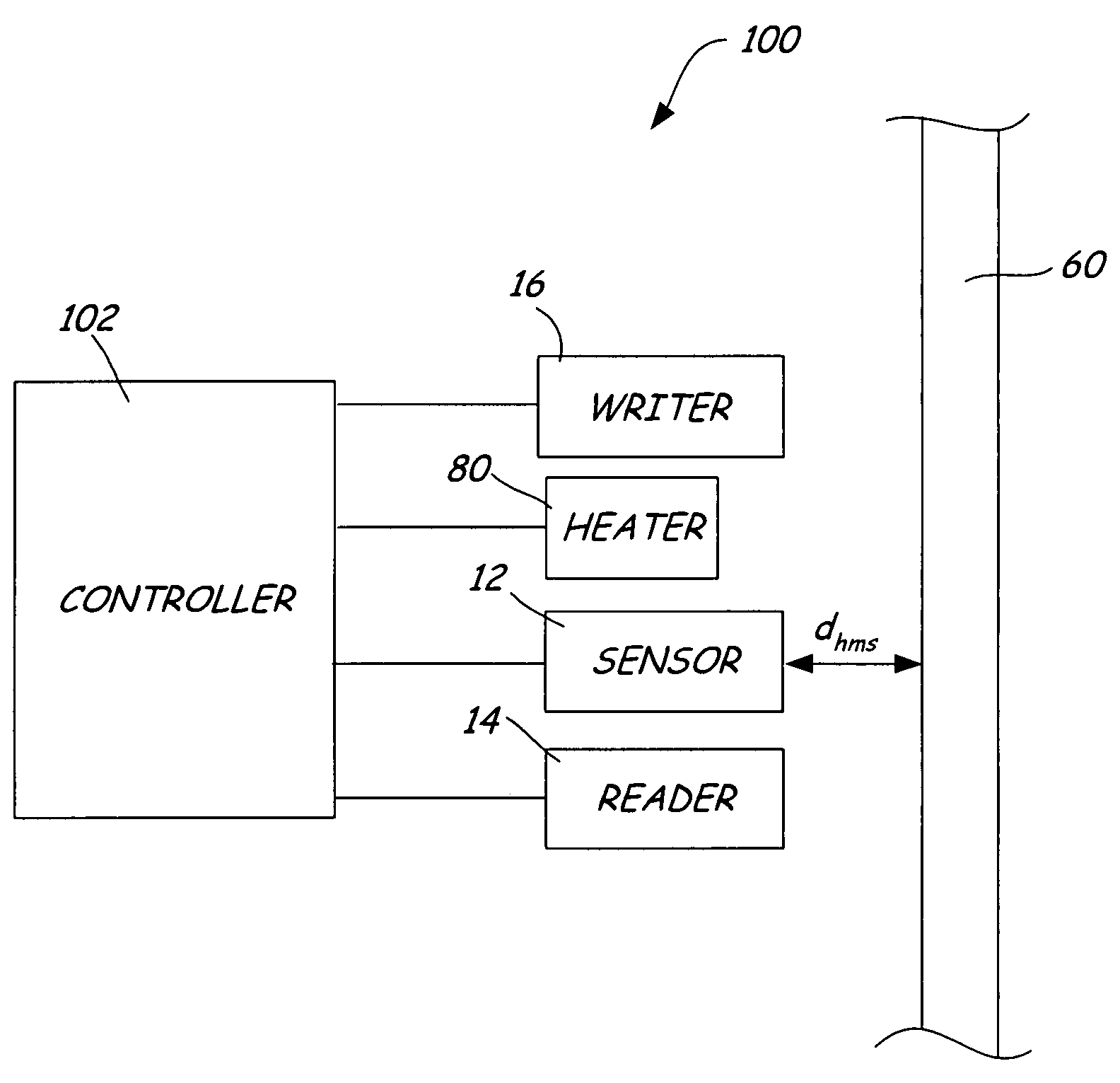Magnetic recording device including a thermal proximity sensor
a thermal proximity sensor and magnetic recording technology, applied in the field of magnetic recording devices, can solve the problems of compromising the life of readers, most conventional recording systems do not provide reliable approaches to monitoring the hms in-situ, and temporal modulation of the hms
- Summary
- Abstract
- Description
- Claims
- Application Information
AI Technical Summary
Benefits of technology
Problems solved by technology
Method used
Image
Examples
Embodiment Construction
[0014]FIG. 1 is a cross-sectional view of transducing head 10 including thermal proximity sensor 12 to provide signals related to the head-to-medium spacing (HMS) of transducing head 10. Sensor 12 will be described in more detail with regard to FIGS. 2-6. Transducing head 10 includes reader 14 and writer 16 that define medium confronting surface 18. Reader 14 includes bottom shield structure 22, read element 24, read gap 26, and top shield structure 28. Writer 16 includes first return pole 30, first magnetic stud 32, main pole 34, second magnetic stud 36, second return pole 38, first conductive coil 40, and second conductive coil 42. Main pole 34 includes main pole body 44, yoke 46, and main pole tip 48.
[0015]Reader 14 and writer 16 are each multi-layered devices, and writer 16 is stacked on reader 14 in a piggyback configuration in which layers are not shared between the two elements. In other embodiments not illustrated, reader 14 and writer 16 may be arranged in a merged-head con...
PUM
| Property | Measurement | Unit |
|---|---|---|
| distance dsp | aaaaa | aaaaa |
| operating temperature resistance | aaaaa | aaaaa |
| operating temperature resistance | aaaaa | aaaaa |
Abstract
Description
Claims
Application Information
 Login to View More
Login to View More - R&D
- Intellectual Property
- Life Sciences
- Materials
- Tech Scout
- Unparalleled Data Quality
- Higher Quality Content
- 60% Fewer Hallucinations
Browse by: Latest US Patents, China's latest patents, Technical Efficacy Thesaurus, Application Domain, Technology Topic, Popular Technical Reports.
© 2025 PatSnap. All rights reserved.Legal|Privacy policy|Modern Slavery Act Transparency Statement|Sitemap|About US| Contact US: help@patsnap.com



